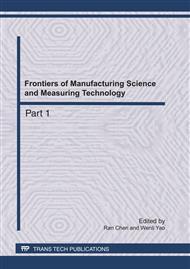p.1155
p.1159
p.1164
p.1169
p.1173
p.1177
p.1181
p.1185
p.1190
Excellent Rate Capability in H2SO4 of a Porous Carbon Prepared by Template Method Using a Mazzite Mineral as Template
Abstract:
A porous carbon was prepared by template method using a mazzite mineral as a template. X-ray diffraction (XRD), nitrogen adsoption, scanning electric microscope (SEM) and cyclic voltammetry (CV) were used to investigate the phase composition, pore structure, morphology and electrochemical performance of the carbon. The surface area of the carbon is 511m2/g. The pores of the carbon are mcropores and mesopores. In H2SO4 medium, the carbon exhibits a low capacity and a rectangle-like shaped CV curve at low scan rate. When the scan rate increases from 10 to 200mV/s, the capacity decreases only from 47 to 41F/g, and the rectangle-like shape keeps well. The carbon exhibits an excellent rate capability.
Info:
Periodical:
Pages:
1173-1176
Citation:
Online since:
May 2011
Authors:
Price:
Сopyright:
© 2011 Trans Tech Publications Ltd. All Rights Reserved
Share:
Citation:


